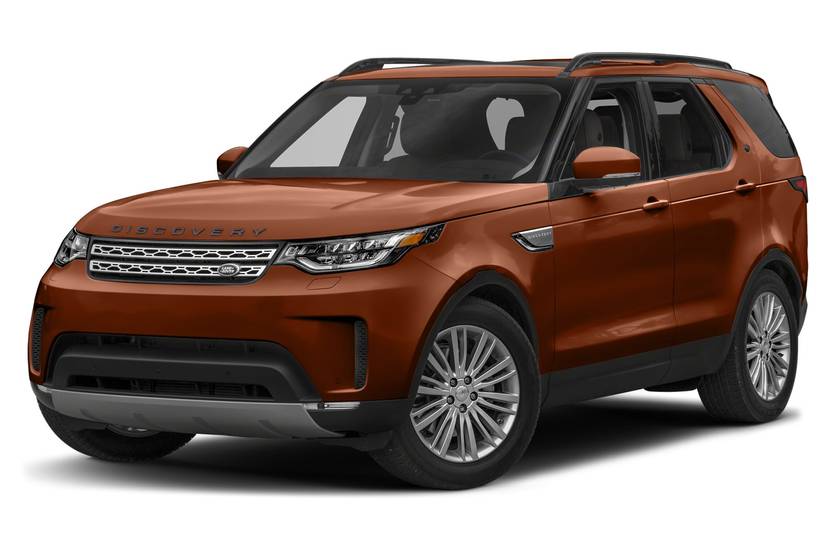
Land Rover calls the Discovery an SUV that can legitimately accommodate "seven full size adults," though it comes standard with five seats (a two-position third row is optional). Even so, the exterior dimensions are modest.
At 195.7 inches long, the Discovery is more than a foot longer than its nameplate sibling, the Discovery Sport, but it's shorter than Land Rover's flagship SUV, the five-seat Range Rover. It goes on sale in mid-2017 and will start around $50,000, about $12,000 more than the smaller Discovery Sport.
Exterior
A spitting image of the Discovery Vision concept shown at the 2014 New York International Auto Show, the Discovery doesn’t look much like the Discovery Sport. Refreshed for 2017, the smaller Sport has circular headlights and taillights that lend a perky, cute-ute expression. Not so with the full-size Discovery, whose lights are piercing and decidedly horizontal. It has the effect of an angrier Range Rover Sport.
A stepped roofline lends plus-sized dimensions behind the C-pillars; it also ties the Discovery to its historical predecessors. The asymmetric tail, meanwhile, is a stylistic gamble. Land Rover offset the Discovery’s license plate to the driver’s side so it flanks one taillight while the other light sits adjacent to the brand’s green badge. It’s a throwback to earlier Discoveries, which also had an asymmetric tail with an offset plate. But the prior design had clear asymmetry.
Interior
Three overhead glass panels (including a traditional moonroof up front) should let a lot of light into the cabin. A pillar-like center panel splits the dashboard, with plenty of hidden storage in and around it — from a compartment under the cupholders that can hold up to four iPads to a flip-down panel for the climate controls that exposes a cubby behind it. An available multimedia display measures 10.2 inches, and the rotary shifter and terrain-mode dial should be familiar to any Land Rover regulars.
With a sliding three-position bench in the second row and optional two-seat third row, the Discovery can accommodate up to seven occupants. So can the Discovery Sport and Range Rover Sport, which have optional third rows, but the way-back seats in both SUVs are miniscule.
Both the second and third row are power-foldable, with dashboard controls so drivers can put the seats down from the front; Land Rover says the seats can detect resistance and won’t crush anything (or anyone) in the way.
Under the Hood
Land Rover’s supercharged 3.0-liter V-6 is good for 340 hp and 332 pounds-feet of torque, enough to get the Discovery to 60 mph in a claimed 6.9 seconds. You can also get a turbo-diesel 3.0-liter V-6 that makes 254 hp and 443 pounds-feet of torque; it’s good for a 7.7-second sprint to 60 mph, according to Land Rover. Both engines drive all four wheels through an eight-speed automatic transmission. Maximum towing capacity is 8,201 pounds.
Typical of a Land Rover, the Discovery boasts prodigious off-road capabilities. The automaker says the SUV has up to 11.1 inches of ground clearance and can drive through as much as 35.4 inches of water. An adjustable air suspension is optional, as is a two-speed transfer case with a low range for off-roading.
Safety
Available safety features include forward collision warning with automatic emergency braking, adaptive cruise control, automatic high-beam headlights, lane departure warning with corrective steering and a blind spot warning system. Land Rover says the blind spot warning system can warn you of a fast-approaching car in an adjacent lane, not just a car that’s already there.



































.jpg)